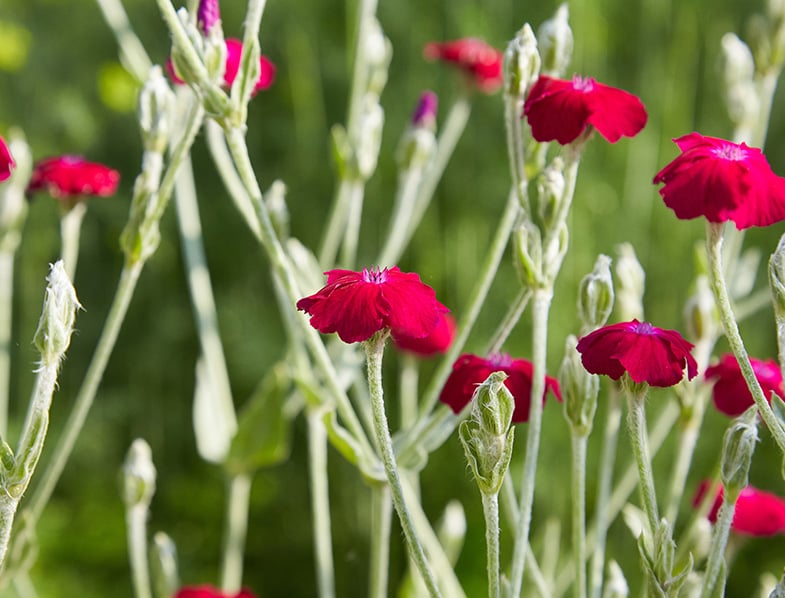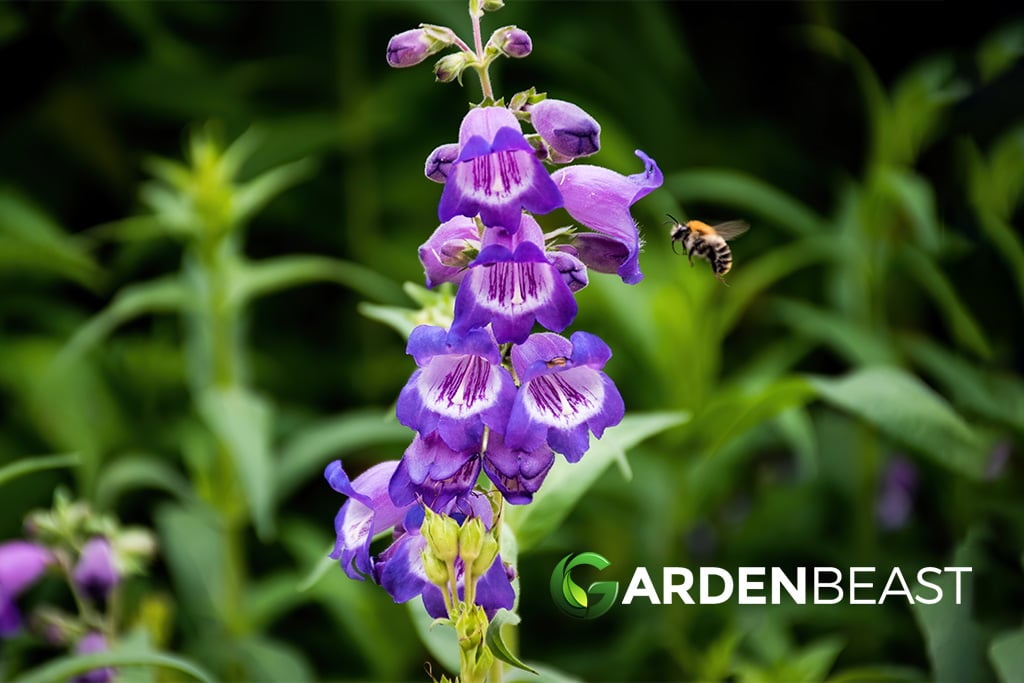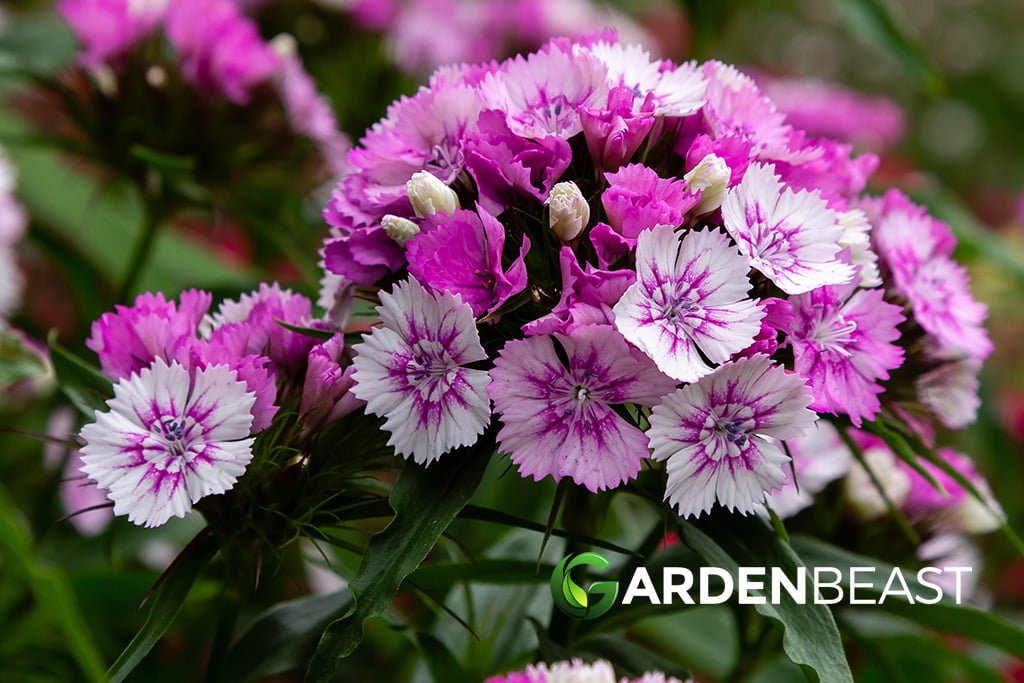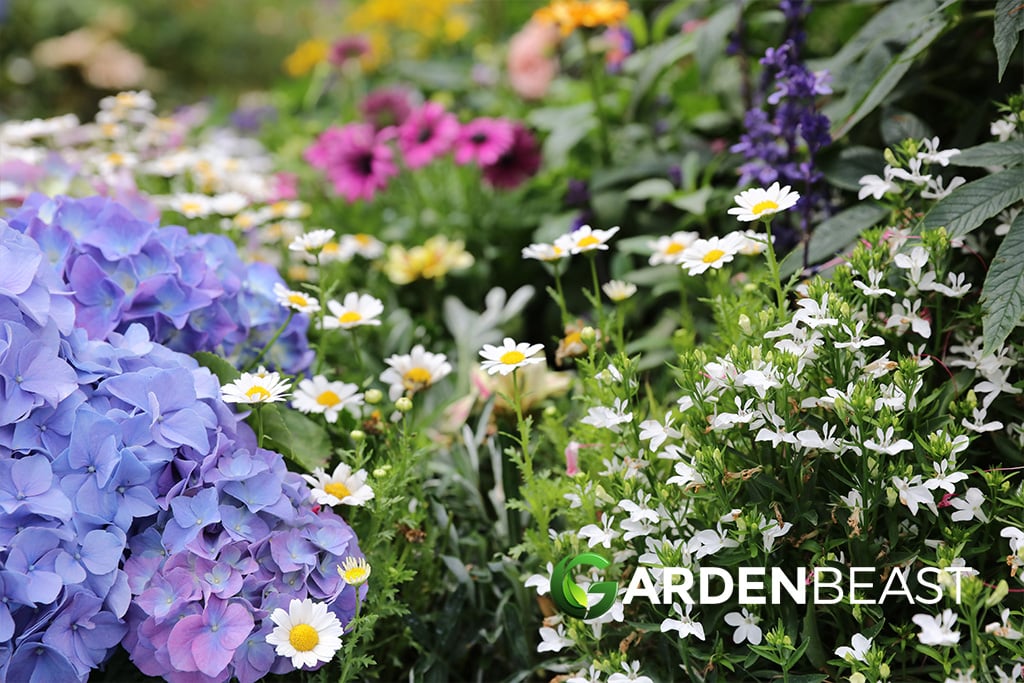Perennials are plants that have a longer lives and live for more than two years. The name roughly translates as “through the years”. This genre includes countless plants, from flowers to fruits, herbs, and even vegetables. Nonetheless, in general terms, the word perennial is used to distinguish plants without woody parts from shrubs or threes.
In what follows, we will discuss some of the main benefits of growing perennials in a home garden. We put together some helpful tips for growing perennials, as well as a list of our favourite 10 perennial flowers that you can easily grow from seed.
Benefits of Growing Perennials
When it comes to perennials vs annuals, perennials have the obvious advantage of a longer lifespan. Yet, there are many other ways in which these plants can benefit your garden.
- Improved soil structure – To survive for several years, perennials gather all their strength in their roots. They establish a complex root system from their first season. By the second growing season, they will have already developed a deep and complex root system. Strong roots are very important for the soil structure. For starters, they aerate the soil. They also create irrigation channels.
- Boost of nutrients – Due to their root systems, perennials are able to bring nutrients upwards from deeper layers of soil. This will aid the growth of plants with less complex root systems, like annuals.
- Moist soil – Another advantage of the complex roots of perennial plants, is their ability to bring up water from lower layers of the soil. This prevents the soil from drying out, and it also helps other plants with less complex roots.
- Soil protection – Many perennials keep their foliage when they die back. This creates a cover that keeps the soil cool and moist. Moreover, the roots of the plants protect soil erosion.
- Variety – Perennials are very versatile and different plants can have different blooming periods. As such, if you plan your flower beds properly, you can enjoy lovely bloom from early spring to late fall.
Tips for Growing Perennials from Seed
Perennials are usually easier to propagate through division. However, if you want to grow new flowers that you don’t currently have access to, we have some tips that will help prepare you for this mission.
- Have patience – The germination period can differ from one perennial plant to another. As such, it is important to arm yourself with plenty of patience. Many plants that are easy to grow can take a few weeks to germinate. On the other hand, some plants can germinate in less than a week, but they can be quite pretentious when it comes to growing conditions. Depending on the flowers that you grow, be prepared to wait between 1 week and 1 month for the seeds to germinate.
- Provide an adequate growing environment – If this is your first time growing plants from seed, we advise you to use a seed starter tray. This will make it easier for you to adjust the humidity. It will also allow you to observe the seeds without messing with their growth. You can also cover the seed pots with a clear plastic bag. Make sure that the plastic bag is loosely tied. You want to create an environment that retains humidity, but you also want to allow slight air circulation.
- Expose the seeds to plenty of light – For the seeds to bloom from their first year, you need to make sure that they get plenty of light. Many seeds only need a little soil scattered over them. Some only need to be pressed to established soil contact. If you feel that you don’t have enough natural sunlight, consider buying a led grow light system. Opt for one with a full spectrum of light.
- Don’t neglect the timing – Seeds need to be started indoors 8 to 10 weeks before the last estimated frost. Once the danger of the frost has passed, you can transplant the seedlings outdoors. If you don’t have an outdoor garden, simply transplant them to bigger containers, so that they can develop good root systems.

Top 10 Perennials to Grow from Seed
1. Heliopsis Helianthoides Scabra
Also known as Asahi false sunflower or the Oxeye Daisy, this is a unique flower to have in your garden. It has many congested golden florets, surrounded by larger petals. It is a very sturdy plant, which can adapt to most temperate environments. In the wild, you can usually find it in prairies or on the edges of woodlands. It is very popular from Hudson Bay to New Mexico. Nonetheless, it can grow in most places found in the USDA hardiness zones 4 to 9. It can grow up to two feet tall, it is very drought tolerant, and it blooms from June to September.

Light helps with the germination so simply press the seeds onto the soil and sprinkle a little medium on top. Plant groups of 3-4 seeds. Keep the seeds at an average temperature of 20 °C and allow about three weeks for germination.
2. Agastache Foeniculum
Also known as Anise Hyssop, this is yet another prairie perennial, best suitable for an English or a cottage garden. It is quite fragrant, which is why it is also referred to as Fragrant Giant Hyssop or Lavender Giant Hyssop. It usually grows about 2-4 feet tall and 1-3 feet wide, having a clump-like structure. Its leaves bear a slight resemblance to mint leaves, growing in opposite directions on the square stems. It grows well in USDA hardiness zones 4 to 9.

The seeds need light to germinate and they can take between 1 and 4 weeks. Gently sprinkle them with soil and place them in a spot that gets plenty of natural sunlight. To improve germination, you can try cold stratification. This process involves exposing the seeds to a cold, moist environment, before planting them. You can start the springs indoor in the spring, but you can also sow them directly outdoors in the fall.
3. Gaura Lindheimeri
This plant is native to Texas and Louisiana, but it can adapt to most places in USDA hardiness zones 5 to 9. It is also known as Beeblossom, Whirling Butterflies, or White Gaura. It has tall stems, with singular airy-looking flowers. The flowers have 4 petals. They are usually creamy white or they can feature touches of pink. Due to the fact, there is just one flower on the spiky-looking stems, they often create the illusion of butterflies flying in a garden.

To grow this plant from seeds, it is best to use sterile potting soil. Press the seeds onto the soil and barely cover them with soil. Use a plastic cover to maintain a moist environment during the germination period. They take about 2-3 weeks to germinate. During this time, their stems will grow quite fast. It is best to cut back the stems before transplant, to encourage growth.
4. Aliums
Aliums are a type of ornamental onions. They feature large, round heads with purple flowers. They are very easy to grow and flower in the spring and early summer. These plants thrive in full sun. They are also quite low-maintenance and drought-resistant. For the best results, avoid damp and heavy soil. Instead, plant them in well-drained soil in a sunny location.

Aliums are slow germinators, so it is best to plant them directly outdoors. They usually take about 12 weeks to germinate. However, if the environment is not ideal, they can take up to a year to germinate. The adequate sowing period depends on temperature but also on the condition of the soil. Wait for the last frost to pass and make sure that the soil is dry but not compacted by seasonal rains.
5. Lychnis Coronaria
This lovely perennial is also known as Rose Campion, Crown pink or Rabbit’s Ear. It is very appreciated for its abundance of magenta, white or pink flowers. The tall white stalks of these plants do a great job putting the flowers in the spotlight. The Rose Campion grows up to 60 cm tall and 40 cm wide. Due to its size, it is suitable for the back row of flower beds. It is also a very low maintenance plant, and relatively easy to grow from seeds.

The easiest way to grow this plant from seed is to plant the seeds directly outdoors in late fall. It needs a period of cold weather to germinate. Simply sprinkle the seeds in the area where you want the plants to grow. Don’t cover them with soil because they need light to germinate. Once you will have grown your first flowers, you won’t have problems propagating them. If you don’t deadhead spent flowers, the Rose Campion will self-seed.
6. Penstemon
Also known as Beardtongue, this versatile plant is suitable for almost any garden style. It is native to California, but it is hardy for zones 3 to 9. It has low watering requirements, and it is overall quite low maintenance. It features an abundance of flowers, whose beauty is unmatched by other perennials.

To grow this plant from seed you will need to sow directly outdoors in spring or early summer. Sow the seeds in fertile soil with good draining properties. Sprinkle the seeds on the soil and barely cover them with a thin layer of soil. Keep the soil moist and expect the seedlings to emerge in 2-3 weeks. When the seedlings are 5 cm tall, thin them to about 30 cm apart.
7. Delosperma
Also known as the Ice Plant, this beautiful, cold hardy plant is a treasure to any garden. It is native to Africa, but it adapts well in most locations from zones 4 to 8. In cold, wet climates characteristic to zones 4-5, this plant will perform as an annual. It grows up to 20 cm tall and it produces pink, yellow, or purple flowers that resemble daisies. It can be grown in containers as well, with its abundance of flowers making quite a spectacle as they cascade over their container.

To grow the Ice Plant from seed, start the seeds indoors 4-6 weeks before the last frost. Press them onto the soil but don’t cover them. Keep the soil moist and you should see the seedlings emerge in 2-3 weeks.
8. Dianthus
This plant is commonly referred to as Pink. Dianthus plants are related to carnations, and depending on the area where it grows they can behave as perennials, annuals or biennials.
Dianthus has a spicy cinnamon fragrance. Despite its name, its flowers are not only pink. Some cultivars can also have salmon, red or white flowers.

To grow this plant from seed, you will need to start the seeds indoors 8-10 weeks before the last estimated frost. Sprinkle the seeds on the soil and cover them with a light layer of soil. The seeds should germinate in less than 2 weeks. When transplanting the seedlings outdoors, space them about 25 cm apart.
9. Achillea Sibirica
This plant is native to Siberia and it can adapt to USDA hardiness zones 5 to 9. It is also known as Love Parade and it is treasured for its rich clusters of flowers. The stalks that form the clusters spring from a common centre and have a similar length, creating a flat surface of booms. This plant grows up to 60 cm tall and 40 cm wide. It thrives in full sun and it needs well-drained soil.
To grow Love Parade from seed, sow the seeds indoors 8 weeks before the last frost. Press the seeds onto the ground and leave them uncovered. The seedlings will emerge in 2-3 weeks.
10. Salvia Nemorosa
Also known as Caradonna or Woodland Sage, this wildflower is suitable for many garden styles. It looks best in ornamental borders where its abundance of violet-blue flowers is properly displayed. It blooms from May to July, and its nectar-rich flowers attract countless beneficial insects. It grows up to 50 cm tall and 30 cm wide.

To grow this plant from seed sow indoors 10-12 weeks before the last frost or sow directly outdoors in the summer. To grow indoors use a starting formula. Press the seeds onto the ground and keep the soil moist. The seedlings will emerge in 2-3 weeks.
Conclusion
These are but a few of the many perennials that can enrich your garden. The plants presented above have a high germination success rate, so they are ideal for beginner gardeners. Moreover, they are easy to care for and very resilient. The process of sowing the seeds is similar for most of them, but it pays off to experiment with a wide variety of plants to better understand their needs.
What perennials did you grow from seed successfully? Share your experience in the comments below!

